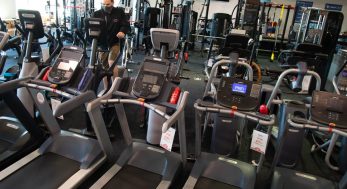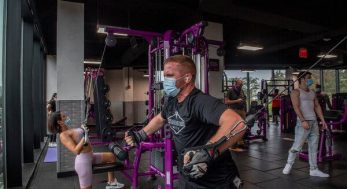To top it off, South Korean researchers have thoroughly analyzed the country’s Covid-19 cases, revealing patterns of transmission that scientists in other countries, including the United States, haven’t been able to discern. They have consistently reported their findings, demonstrating how Covid-19 is and is not transmitted.
In one report, for example, researchers noted the extensive spread of Covid-19 among call center workers seated on one side of the 11th floor of a high-rise building in Seoul. The report showed the risk of close, sustained exposure, and the much lower risk for those seated on the other side of the same floor, even though many of the workers spent time in the same lobby and took the same elevators.
In late February, a Covid-19 case was diagnosed in Cheonan, a city of about 700,000 people 50 miles south of Seoul. Local investigators traced potential contacts and discovered the person who was diagnosed with Covid-19 had attended a four-hour fitness dance instructor workshop held 10 days earlier, on February 15.
The investigation then went in two different directions: first, the team identified the other attendees of the workshop, and found eight of the 27 dance instructors had Covid-19. Public health officials also discovered that one of the infected instructors was from Daegu, where a very large outbreak related to the Shincheonji Church of Jesus was occurring at the time. This person had had no symptoms during the class in mid-February, but became ill soon thereafter.
Public health officials then identified the instructors’ close contacts, including students who attended their classes. Within a few weeks, they found 217 students in 12 different facilities who had participated in at least one 50-minute session with one of the eight infected instructors. Of these students, 54 (or nearly 25%) were diagnosed with Covid-19.
Officials went on to identify 830 close contacts of both the infected instructors and students; these people were tested and an additional 34 cases were found.
But the investigators did not stop there — the goal was thorough contact tracing in order to control the pandemic. They tested 418 close contacts of the 34 tertiary cases and found another 10 cases of Covid-19.
In total, they found 112 cases related to the single first case — all occurring within a month of the initial mid-February dance fitness training class.This demonstrates the frightening exponential growth of cases, while also raising several unsettling questions about active physical exercise, and whether it may promote the spread of the virus.
The three authors of the study, from a local medical school in Cheonan, wrote that “fitness dance classes set to Latin rhythms have gained popularity in South Korea because of the high aerobic intensity.” In other words, the workouts made the students sweat — and huff and puff.
The authors raise the possibility that it is this huffing and puffing that might be the problem. They note that one infected instructor taught Pilates and yoga for classes of seven to eight students in the same facility as a different infected instructor with Covid-19 taught the more intense fitness dance classes. They found that none of the Pilates or yoga students developed Covid-19. In contrast, several of the hard-working, overexerting dance crowd developed the infection.
The authors postulated the differences in workout intensity — breathing slowly and thoughtfully during yoga versus the gasping for air that accompanies a rigorous aerobic workout — may have caused the pronounced differences in the infection rate.
Although the authors did not expound on their theory, it’s likely they considered the contribution of “minute ventilation” — a pulmonary measurement that records how much air a person breathes over 60 seconds. A normal person reading this article or practicing yoga moves about six liters of air a minute; but a hot-footed fitness dancer trying to stay fit could move at least 10 or 15 liters a minute because of deeper breaths and a faster breathing rate.
If the infected instructor demonstrated vigorous dance movements, that means the likelihood of exhaling infectious aerosols may have increased, while the likelihood of the students inhaling possibly contagious droplets may have gone up as well.
The authors wrote, “Vigorous exercise in closely confined spaces should be avoided during the current outbreak.” Though sobering, this information is an important reminder that a sudden, all-in reopening in the US this year is not safe.
A deliberate, activity-specific strategy may be more realistic. For people looking forward to returning to their exercise classes, this study may be a helpful reminder to start first with low-intensity classes first, while monitoring the number of new coronavirus cases in the area. If there isn’t an uptick for several weeks, then progressing to heavier cardiopulmonary exertion may be the ticket out of lockdown.


